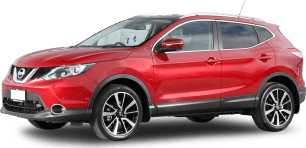The MY19 upgrade - one of many over the ASX's long and fruitful life - has brought some changes to the price list and a rejig of the available models. There's a new entry-level model, the ES, the mid-point LS and a range-topping Exceed. All pricing is RRP and how much you pay is between you and your dealer. The drive-way price is helpfully listed on the Mitsubishi website, however. Our model comparison features the full price range.
A big change for MY19 is the end of the all-wheel drive (AWD) for the ASX, with just front-wheel drive on offer. So no more AWD option, meaning if you're after an off-road review, you're out of luck.
The new entry-level ES means it's now $1510 cheaper than before for the cheapest ASX.
The ASX now starts at $23,490 for an ES with a manual gearbox and $25,490 for the CVT automatic transmission. The value proposition is pretty reasonable - you get 18-inch alloys, four-speaker stereo, climate control, reversing camera, halogen headlights, leather gear shifter and steering wheel, power folding rear vision mirrors, cruise control, power windows all round, cloth trim and a space saver spare tyre.
The ES ADAS is $26,990 and is essentially the ES with a safety pack, which you can read about in the safety section.
Moving on to the second of the three models, the LS starts at $27,990 and is auto-only - so no manual transmission. To the ES spec you can add keyless entry and start, the 'ADAS' safety package, rear parking sensors, fog lights, auto high beam, auto headlights and wipers and partial leather seats with fake suede inserts (which are rather good, actually).
.
The ES and LS comes with a four-speaker sound system while the top of the range Exceed scores six speakers. All of them have the same 8.0-inch touchscreen multimedia system. What is standard across the range is iPhone and Android integration with Apple CarPlay and Android Auto respectively. The new screen looks good and the updated software is easy to use, but it's not very well integrated - for instance, Apple CarPlay's clock disappears off the edge of the screen.
There is no sat nav (hmmm) or CD player (far enough, it's 2018), but there is digital radio, Bluetooth connectivity and a baffling screen that displays your GPS co-ordinates.
There are seven colours available - black, 'Lightning Blue', 'Titanium' (grey, obviously), red, 'Sterling Silver' and 'Starlight' all cost an extra $590 while white is a freebie. Not surprisingly, orange and brown are off the menu.














































 copy.png)











